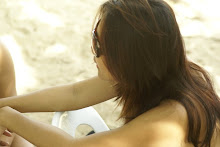I know i'm not supposed to check out things like this but as time goes by and its getting nearer...I can't stop myself from browsing post about pregnancy...lolz...
NOW..its making me more scared...hahaha
If you are eating right now better not view the pictures...
PLACENTA with the Amniotic Sac
The placenta is always examined after the birth of your baby. This is partially to make sure that the entire placenta was expelled after your gave birth, but it can also tell you a lot about your pregnancy, including things like your health and the gestational age of the pregnancy.
This photo is of the entire placenta including the amniotic sac. Notice that the amniotic sac is mostly still intact with the exception of the hole in which the baby was born through. You can see that there is not a lot of space to be had inside the amniotic sac. The baby who lived here weighed in at 8 pounds 9 ounces. Talk about a cramped space!
Maternal Side of the Placenta
The maternal side of the placenta is the side that attaches to the uterine wall. This side looks very knobby and you can see the bumpy lobes of the placenta. Your doctor or midwife will exam this side of the placenta to ensure that the placenta is complete and that no parts of the placenta are left inside your uterus. They may also check for calcifications of the placenta, which is a sign of aging.
Baby's Side of the Placenta
The baby's side of the placenta is smooth in comparison to the mother's side of the placenta. This is also where the umbilical cord is attached. One of the things that your doctor or midwife will look for is that the umbilical cord is attached in the center of the placenta and not to one side or actually in the membranes.
Your practitioner will also look at the umbilical cord. One thing they will look for will be the number of vessels that the umbilical cord has. An umbilical cord should have two arteries and a vein, called a three vessel cord.
While some people never have any desire to see the placenta, it is becoming more popular to actually look at the placenta. It is a unique organ, the only disposable organ that is ever grown. The placenta is an amazing organ that helped house and nourish your baby during your pregnancy.
Friday, August 1, 2008
Placental Exam :D
Subscribe to:
Post Comments (Atom)



1 comment:
I love that you have interest in your placenta and that you remember so many facts about it!
I would like to comment on your comment that it is "...the only disposable organ" Myself and many other women across the country are part of a new field of alternative health in which we encapsulate placentas to be taken by the mother postpartum to help with PPD and lactation among other things. While the placenta is regularly discarded, it is done so without the understanding of the medicine that it provides to the mother (and even to the child when they are older). To learn more about placenta encapsulation and the benefits of placentophagy (consumption of the placenta) visit www.Placenta Benefits.info. I hope you will never view the placenta as disposable again!
Post a Comment